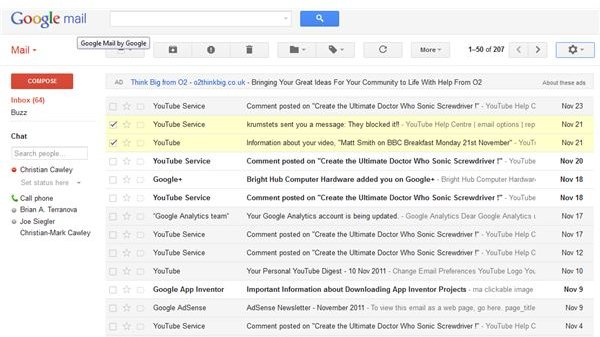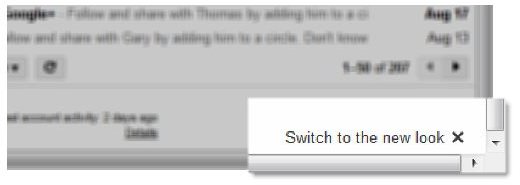The Unofficial Guide to the New-Look Gmail
You’re probably one of the millions of people around the world who own a Gmail account, and if you’re not you more than likely know someone who is. What you may not know, however, is that Google is rolling out a brand new look for Gmail, designed to blend the browser-based email service into their new “elastic” user experience, which pretty much means that all major Google services are going to share a common user interface.
The new look is already present in many Gmail accounts either by default or via a small link in the bottom-right corner. A single click of this link will take you to a new screen where you can confirm that you wish to carry on; a second screen will more or less check that you’re absolutely certain that you wish to continue.
After all, Google wouldn’t want you to dislike their service, so by providing opportunities to back out of the changes they give their users the chance to go back to the comfort blanket of familiarity.
What Has Google Done to My Mailbox?
For many people, the new look – already hinted at in Google Docs – will be easy to use. After all, the same general layout of folders on the left, emails listed on the right and a selection of menu options striped across the top of the browser window, remains.
All that Google has really done to update Gmail is make it a little more responsive – a clicked email message will open instantaneously – and add some pleasing aesthetic improvements.
In fact, if you don’t like the standard look you can alter the Display Density via the Settings menu. The choices are Cozy, Compact and Comfortable; the latter is only available for large displays, while Compact is evocative of the classic view but with the same functionality as present in the new Gmail.
Finding Your Way Around the New Gmail

The enhancements to Gmail really are purely stylistic. While some of the icons and colors might have changed, you will find the same old features in the same old places. For instance, the Compose button is still in the upper left hand corner so you can quickly start a new email message, while the checkboxes for selecting emails for bulk actions also remain where they were in the classic version.
You might see some changes where Google has decided they are necessary; for instance you can switch the left hand column between Chat and Invite, simply by clicking a button at the foot of the page.
If you wish to reply to a message that you have opened, once again all you need to do is click into the empty reply box and proceed, using all of the formatting options you are used to. Using a series of tabs at the top of the window you can switch between Reply, Reply to all and Forward.
It’s the Same, But Better
All in all, the new look is nothing more than a much-needed upgrade that allows Google to resolve one of its main problems, that of visual disparity. There are so many different Google services now, but it is only recently that the search giant has taken the step of providing a unified visual style. This will naturally take time to roll out across the board, but already search, Google News and Google Docs have a new look based on the style now seen in Gmail, as well as Google+.
You can rest assured that Google hasn’t taken anything out of Gmail; similarly, changing to the new look is simple and doesn’t affect your email messages or your ability to read them.
What if I Don’t Like It?

If you’re not keen on the new look for Gmail, you don’t have to change just yet. As described earlier there are various opportunities to change your mind during the process, and mindful of further resistance to the new look Google has provided an option to temporarily undo the change to the new look (temporary because eventually all Gmail users will have to use this new system).
To revert to the classic Gmail, use the Settings menu and select Revert to the old look temporarily from the listed options. Gmail will then be switched back to the browser-based email client that you know and love.
Should you be unhappy about the new look, or be bewildered by the continued inability to forward multiple email messages, you can always view your Gmail account via a standard desktop email client. Go to Settings > Settings > Forwarding and POP/IMAP to configure this and find the correct settings for your particular email client. Full details can be found in Setting Up Gmail in Microsoft Outlook.
This should only take a few minutes, and allow you to avoid looking at the new Gmail should you feel that strongly…
References
- Screenshots provided by author.
